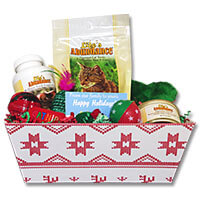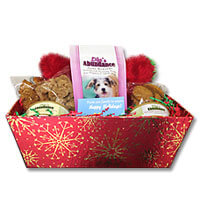

Dogs love to go for car rides. For many dogs, their favorite words are "bye-bye". I've seen dogs jump, prance, smile and bark with delight at the thought of a car ride. How many times have you seen dogs hanging out the car window? Or on the owners lap looking as happy as can be?
Yes, going for a ride in the car can be fun, but driving with dogs can also be very dangerous to both you and your dog. I recently talked to some owners that were in an accident – caused by their dog – in which they were injured, the car they hit had some severe injuries and their dog was killed. How tragic!
There are some very common dangers and causes of injuries that can be prevented – and if you understand them, it will help keep you and your dog safe.
1. Jumpers – Many dogs love to hang out windows and watch what goes by, enjoying the feel of the air in their hair. Some dogs will jump out of an open car window, even though their owners would have sworn they would never do that. One day – for some reason – something extra excites them and out they go. I've seen everything from mild injuries and abrasions to fractures and even death resulting from dogs jumping into traffic and immediately being hit by another car. For every dog that jumps, the owners say the same thing. "He always rides like that – and never jumped before."
2. Air and eye injuries – Some dogs that hang their head out of an open car window can obtain injures when things that are flying in the air hit their head or eyes. When these objects hit the dog's eyes it can cause corneal ulcers and injuries.
3.Airbags – Dogs can be severely (even fatally) injured by airbag deployment. For this reason, many dog seats and harnesses are created for use in the back seat.
4.Distraction – Dogs distract drivers. I've seen excited dogs on their owner's lap moving back and forth from the passenger window to the drivers' window. For one reason or another, they distract their drivers causing an accident. The driver looks at their dog to see what they are doing and wham!
5.Slowed reaction time – With a dog on your lap, your ability to drive and react quickly is impaired. Drivers are often unable to make a quick turn with their dog on their lap. This is a common cause of accidents.
6.Injury in crashes – Pets can be severely injured in crashes and, when they are unrestrained, they can run out of the car and suffer even more injuries. Some have even run away.
7.Foot petal problems – Some dogs (and cats) love to get down by the floor, under the seat or near the foot petals. I've seen several cases where this caused crashes.
Pets riding unrestrained in a vehicle may be cute and fun – until an accident happens. Less than 20% of dog owners use some sort of harness or seat belt to restrain their dog while in a car.
Seatbelts and car seats are especially made to keep dogs safe. We recommend that all dogs be restrained in the back seat during car rides. All pets should have a microchip as well in case they get free during a car ride. Windows should be kept at a lowered point so the dog can get air but can not get their head completely out the window – thus preventing eye injuries and any risk of jumping.
Keep your dog safe.












 Through investigation and interviewing the ill people, the DHHS Bureau of Infectious Disease Control determined that the jerky treats were implicated in spreading Salmonella. Confirmation through laboratory testing of the jerky is pending at the New Hampshire Public Health Labs.
Through investigation and interviewing the ill people, the DHHS Bureau of Infectious Disease Control determined that the jerky treats were implicated in spreading Salmonella. Confirmation through laboratory testing of the jerky is pending at the New Hampshire Public Health Labs.

